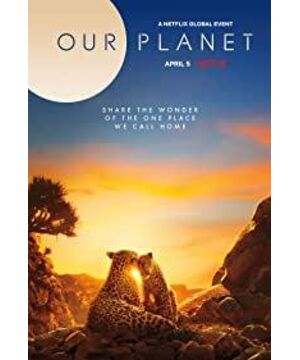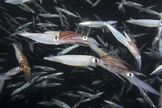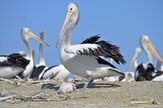It is often heard that every frame of a certain documentary can be used as a desktop. Unfortunately, most of them are actually hard to match. But this one is definitely an exception. All the pictures, whether it is the jumping cheetah, the dense and fast swimming sea fish, or the elegant and huge blue whale, all perfectly demonstrate the magic of the Creator and the wild power that he endowed the animals. And when this temperament is combined with just the right light and shadow, it shows the beauty of life and existence.
From oceans to forests and rainforests on land, from ice sheets to deserts, this series of documentaries shows us a three-dimensional and fascinating planet. Countless creatures staged the legend of their own survival in this homeland. We saw the domination of the polar bear family in the ice world, how the blue butterfly used deception to eat the king's meal, how the magical bird of Guinea tempted its partner, and also See how a company of cheetah brothers cooperates with their prey. . .
The film shows many details of the survival of animals that are unheard of. Seeing such a display in light and shadow is an alternative knowledge acquisition experience that is completely different from reading. At this point, this work perfectly combines the popularization of knowledge with natural aesthetics.
From the experience point of view, the main works of this work include a series of well-received documentary works such as Earth Pulse, Frozen Planet, Blue Planet and so on. Therefore, simply presenting the beauty of wild animals and natural habitats is the entry requirement for such an excellent nature documentary director. Whether the quality of the film goes further depends on his innovative grasp of the theme of the film.
But unfortunately, this kind of grasp still feels a little lack of strength. The same scene of polar bears and glaciers, placed on the frozen planet, excavated a vast scene of endless glaciers, placed on the blue planet, it may become the background of free roaming seals, but on our planet, it is not only necessary to show the ecology of glaciers. The magnificent waves also need to show the complexity and harmony of the glacier ecology, as well as its fragility, to arouse the audience's concern for the natural ecology. I believe that the main creator also thinks so, but the actual effect is not satisfactory
As far as the way of this film is concerned, in the first three episodes, the organic composition of the ecosystem is indeed revealed in the form of an ecological food chain, but the description of the natural habitat in the lens language is a bit too much, which directly caused a not so good. Good influence: The magnificent picture attracts too much attention of the audience. When changing the scene, few people notice that the main creator is revealing the objective composition of the ecological chain, and fewer people are interested in a certain natural element (such as Glaciers, such as rainforests, play a vital role in natural systems and in maintaining plant and animal habitats. The latter, I think, should be the focus of the film and should be emphasized.
The content of deserts, forests, and high seas is limited by the material. Even the reveal of the ecosystem is very weak. And it still strengthens the excavation of the details of specific animal behavior, and does not do a good job of integrating the material and the displayed content to make it more relevant. There are even some shots that are completely out of the scope of the ecosystem, citing a certain kind of animal abruptly, and bluntly explaining what would have happened without them. To know that the lack of elaboration of the language of the lens has completely become a kind of preaching. (like the shark part in the high seas episode)
The first episode of the film serves as an overview of the overall ethos of the series. It's a part that I think is better. The half-covered face of the wonderful part adds to the mystery of the film. The display across various habitats better reflects the unity of the planet. If at the end, in this way, you have me and I have you in some ecology, it may be better to point the point and gather the central idea.
View more about Our Planet reviews








